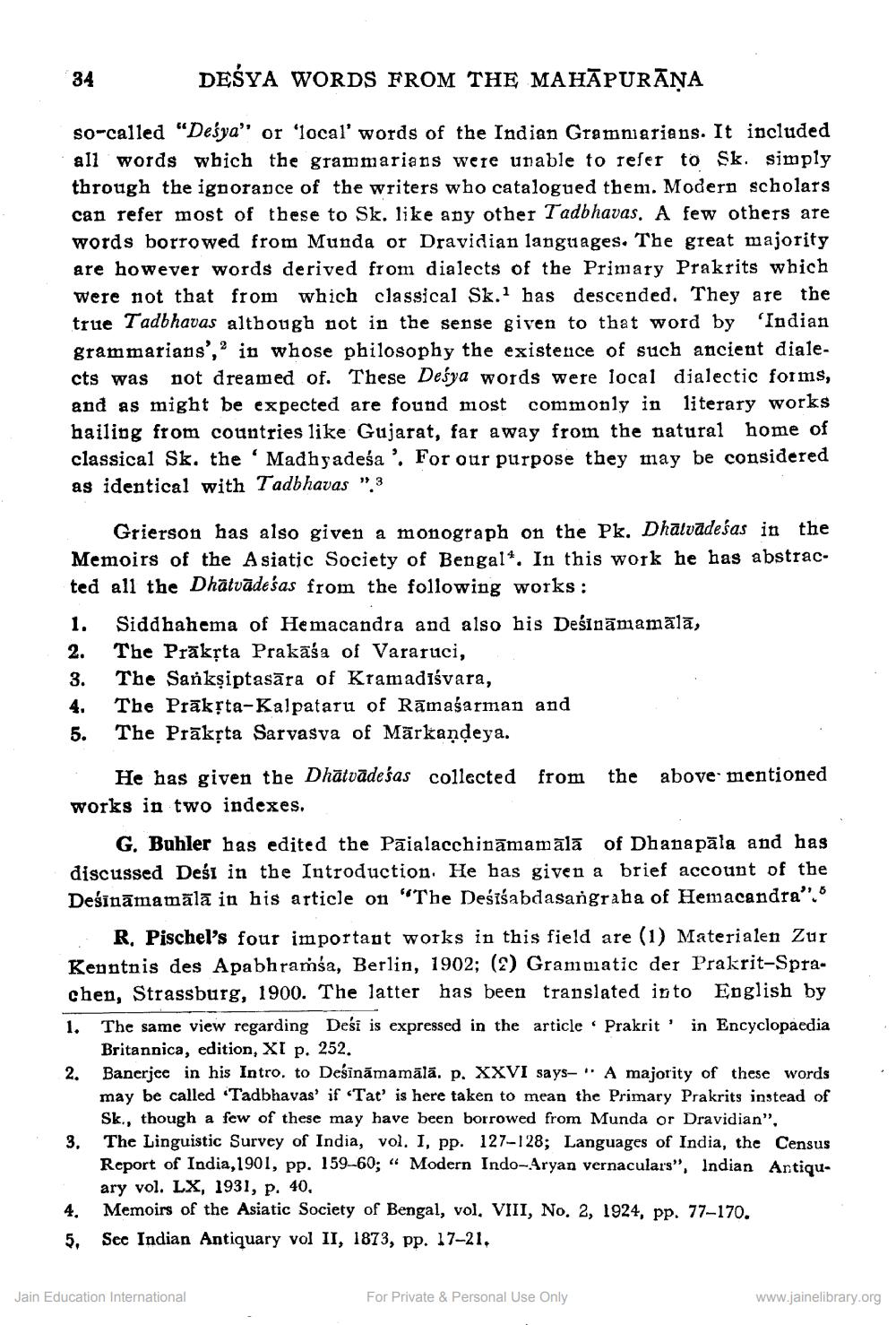________________
34
DEŚYA WORDS FROM THE MAHĀPURĀŅA
so-called "Desya'' or 'local' words of the Indian Gramniarians. It included all words which the grammarians were unable to refer to Sk. simply through the ignorance of the writers who catalogued them. Modern scholars can refer most of these to Sk. like any other Tadbhavas. A few others are words borrowed from Munda or Dravidian languages. The great majority are however words derived from dialects of the Primary Prakrits which were not that from which classical Sk.1 has descended. They are the true Tadbhavas although not in the sense given to that word by 'Indian grammarians', in whose philosophy the existence of such ancient dialects was not dreamed of. These Deśya words were local dialectic forms, and as might be expected are found most commonly in literary works hailing from countries like Gujarat, far away from the natural home of classical Sk. the 'Madhyadeśa'. For our purpose they may be considered as identical with Tadbhavas " 3
Grierson has also given a monograph on the Pk. Dhalvādeśas in the Memoirs of the Asiatic Society of Bengal". In this work he has abstracted all the Dhātvādesas from the following works: 1. Siddhahema of Hemacandra and also his Deśināmamālā, 2. The Prākļta Prakāśa of Vararuci, 3. The Sankşiptasāra of Kramadıśvara, 4. The Prākrta-Kalpataru of Rāmaśarman and
The Prāksta Sarvasya of Mārkandeya.
He has given the Dhātvādeśas collected from the above mentioned works in two indexes.
G. Buhler has edited the Pāialacchināmamālā of Dhana pāla and has discussed Desi in the Introduction. He has given a brief account of the Deśīnāmamālā in his article on "The Deśiśabdasangraba of Hemacandra".
R, Pischel's four important works in this field are (1) Materialen Zur Kenntnis des Apabhramsa, Berlin, 1902; (2) Grammatic der Prakrit-Sprachen, Strassburg, 1900. The latter has been translated into English by 1. The same view regarding Desi is expressed in the article. Prakrit' in Encyclopaedia
Britannica, edition, XI p. 252. Banerjee in his Intro. to Deśīnāmamālā. p. XXVI says, " A majority of these words may be called "Tadbhavas' if Tat' is here taken to mean the Primary Prakrits instead of
Sk., though a few of these may have been borrowed from Munda or Dravidian", 3. The Linguistic Survey of India, vol. I, pp. 127-128; Languages of India, the Census
Report of India, 1901, pp. 159--60; “ Modern Indo-Aryan vernaculars", Indian Antiquary vol. LX, 1931, p. 40.
Memoirs of the Asiatic Society of Bengal, vol. VIII, No. 2, 1924, pp. 77–170. 5. See Indian Antiquary vol II, 1873, pp. 17-21.
Jain Education International
For Private & Personal Use Only
www.jainelibrary.org




